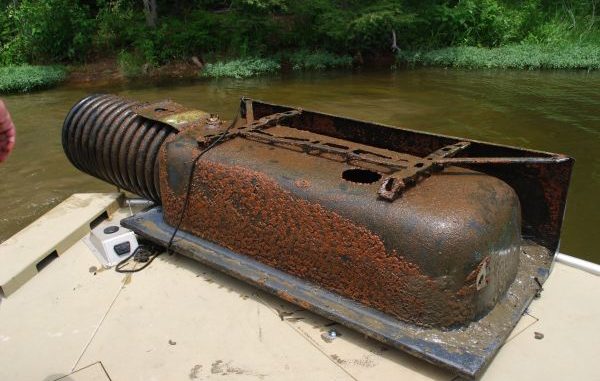
Catfish noodlers use a variety of man-made objects to entice flatheads into confining spaces where they can be grabbed. The “Women, Whiskey and Wrastl’in” crew have settled on bathtubs as their favorite. Preparing one takes substantial work.
The heart of the “tank,” as they call it is a steel bathtub. It has to be steel and not cast iron because it must be able to be cut and bent. Clampitt says that if a magnet won’t stick to it, don’t use it.
The first step is to use a cutting torch to cut a hole big enough to accommodate the “throat” into the end of the bathtub that has the faucet holes. Only three cuts are made. The fourth side is left intact and serves as a hinge when the flap is bent upward to serve as a mounting flange for the throat.
The torch is then used to cut a hole approximately the size of a man’s upper arm into the bottom (the top when the tub is flipped over to work on it) near the end opposite the flange hole. This hole allows a second diver to roust a stubborn catfish that is “sulling” toward the grabber who is seated in the throat.
Throats are either the “guts” of an old home water heater or a 36-inch or so length of ABS plastic culvert pipe. The throat is securely bolted to the flange.
Finally, heavy exterior plywood or cypress boards are cut to completely cover the tub opening, the part that a person would climb into to take a bath. Good quality wood is important because the tank will be fished with the wood side facing down on the bottom and a tank will often be used for over a decade.
Rope of a length necessary to tie the tank off to something secure, such as a tree stump or piling, is the final addition. The tank is ready to go, although it will not begin catching fish until it has been in the water a few weeks.